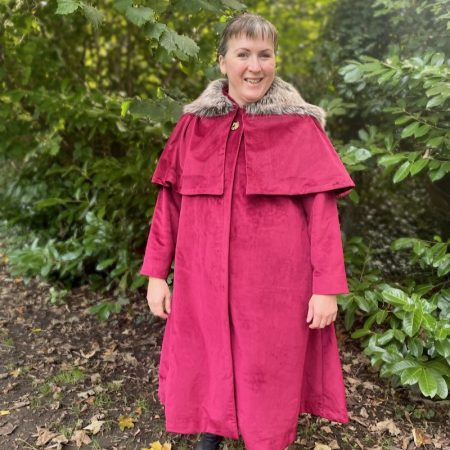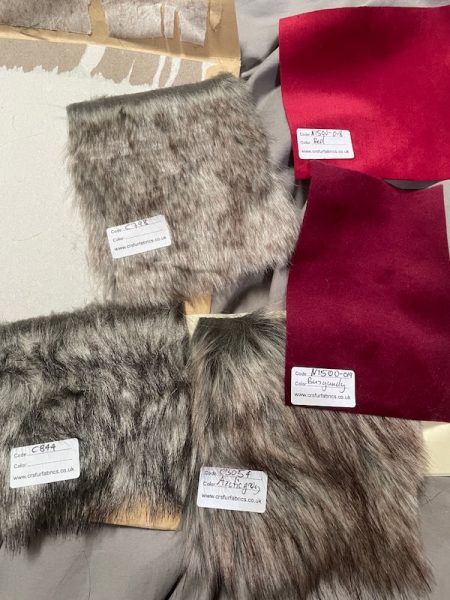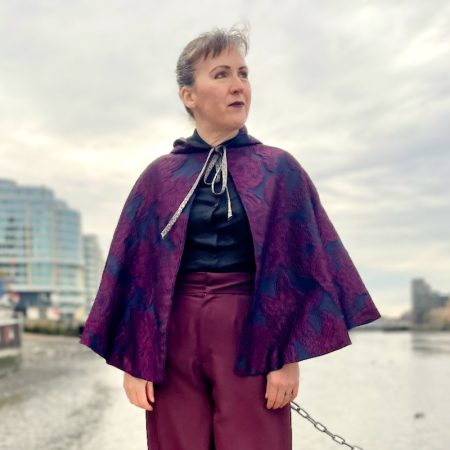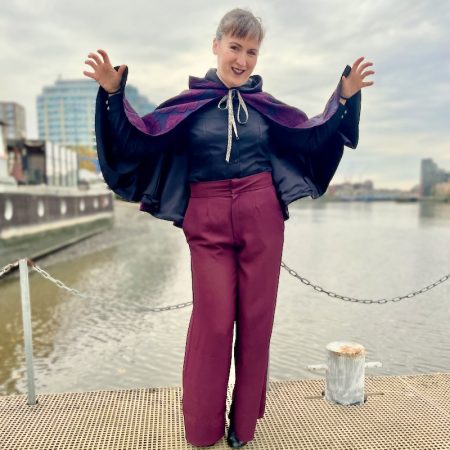Yes, you read that right – these are just the photos from the daylight shoot – the nighttime shoot photos will be coming coming up shortly! Even so, this is a very photo-heavy post with a lot of detail to cover, so grab a cuppa and settle in…
As you recall from my earlier post, I planned to sew a tribute to the iconic Wolfkiller Cloak from Interview with the Vampire, but adapt it to be a swing coat with a detachable fur-hooded capelet in order to make it warmer and more wearable. Honestly, if you haven’t read the other post yet, you really should!
The construction
One of the first parts of the actual construction (after all the flannel underlining basting I did as prep) was to create the bound buttonhole in the swing coat, so no pressure there! Since it’s been a while since I’ve sewn one, let alone in velvet, I thought I’d make a buttonhole in test fabric first, and it’s good I did because I needed to make it a bit longer to accomodate the thickness of the wolf button. I swear I was only pushing the wolf button through to double-check it fit easily through the bound buttonhole I just made, but then his little fangs went over the edge and I had a little giggle! Yup, this is a Lestat coat already. 😂




